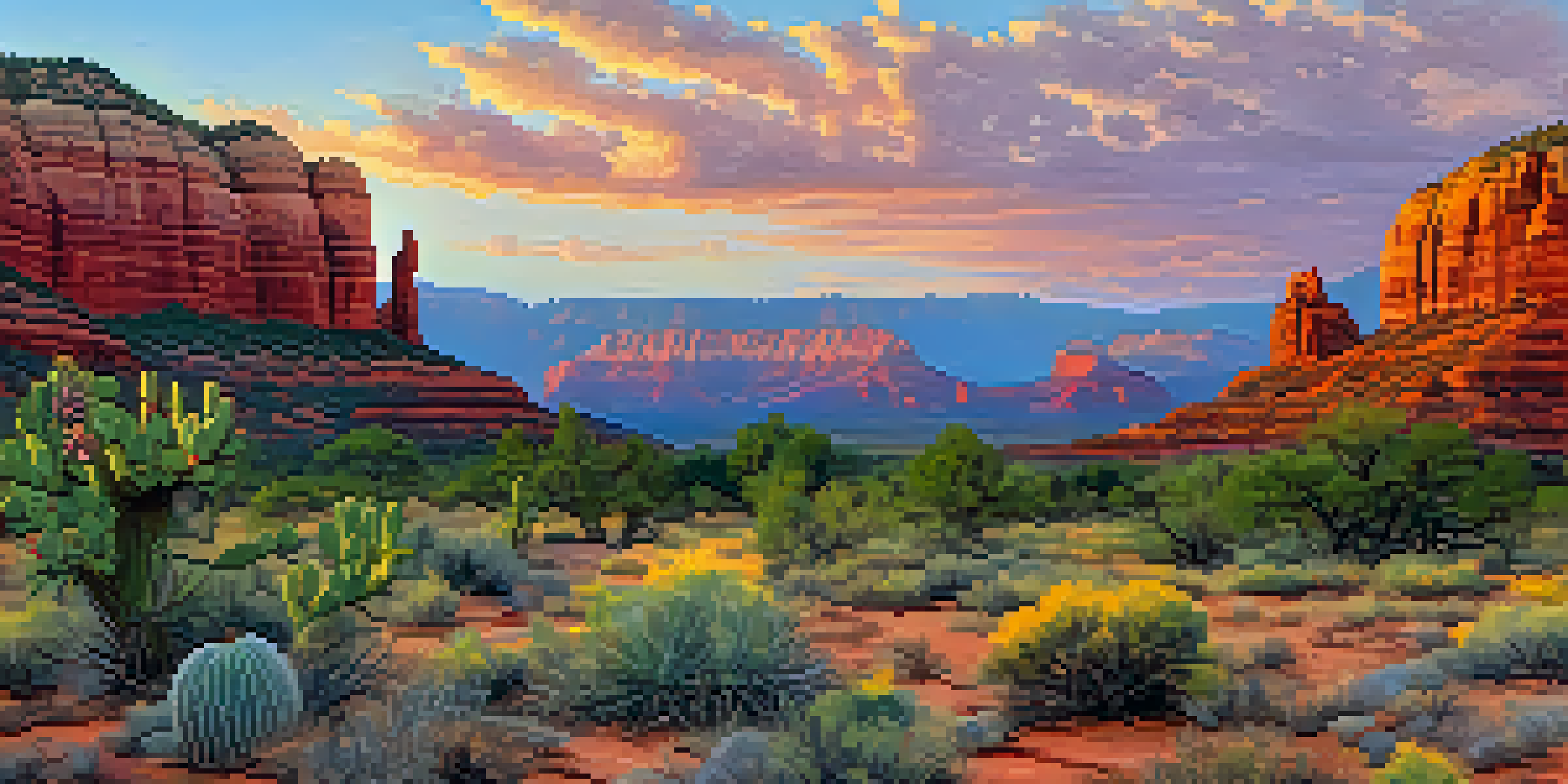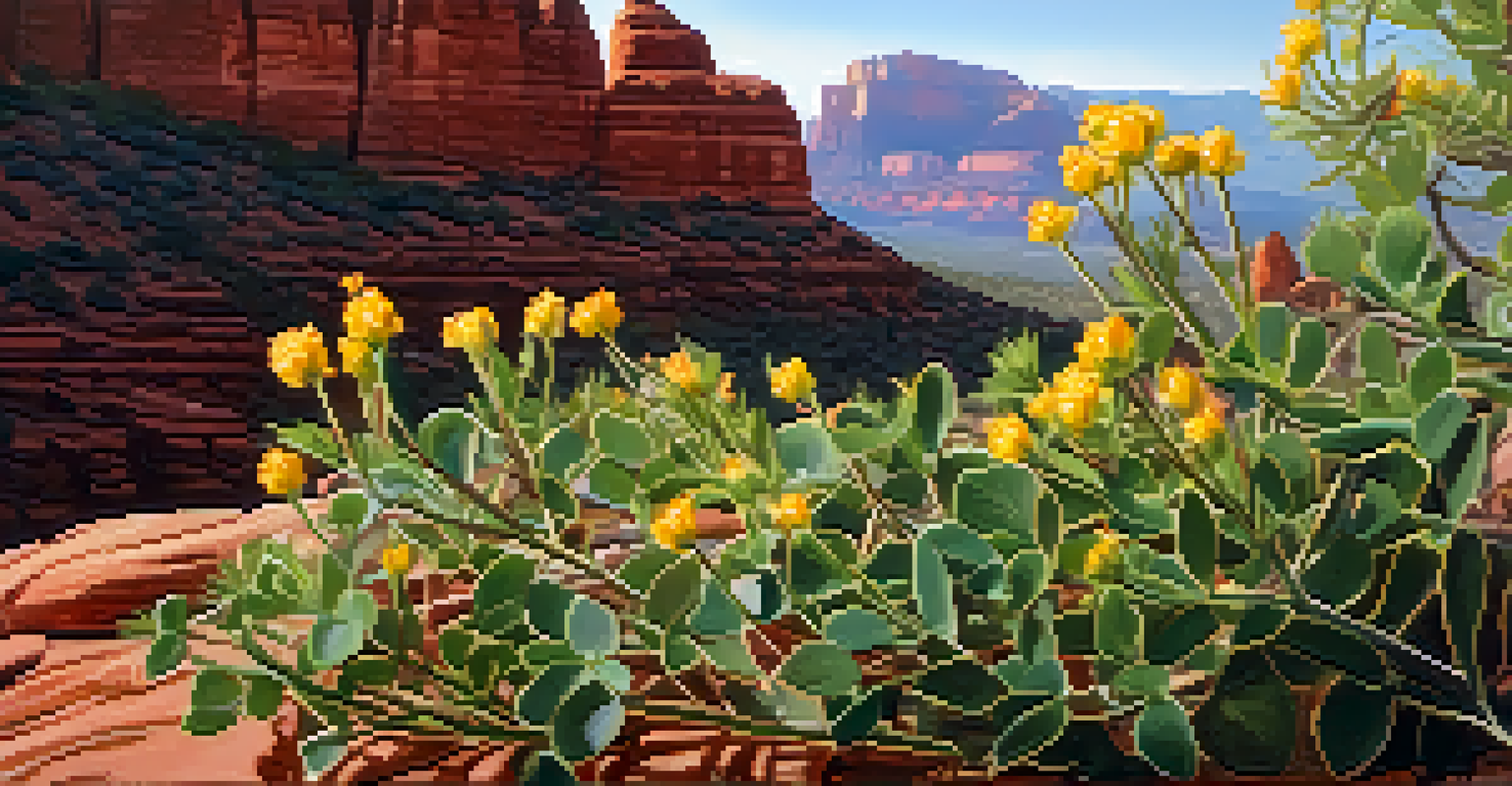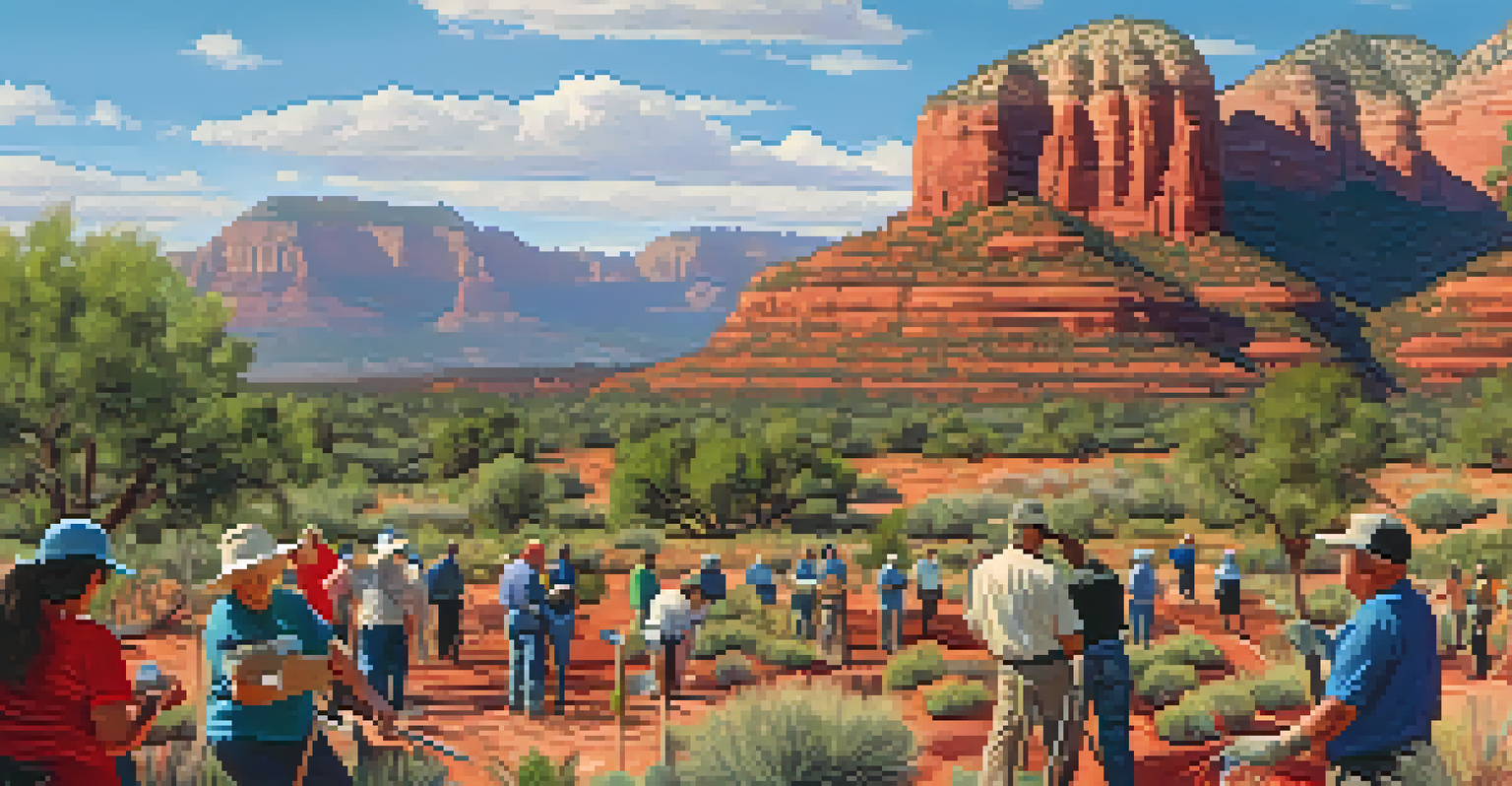Sedona's Biodiversity Crisis: Protecting Native Species

Understanding Sedona's Unique Ecosystem and Biodiversity
Sedona, known for its stunning red rocks and vibrant landscapes, boasts a unique ecosystem that harbors a rich variety of native species. This biodiversity includes everything from majestic pines to diverse wildlife, each playing a crucial role in maintaining ecological balance. However, this delicate web of life is increasingly threatened by human activities and climate change.
In nature's economy, the animals must be able to graze and the plants must be able to grow, or both will perish.
In recent years, the pressures from tourism, urban development, and invasive species have intensified. For instance, the introduction of non-native plants has disrupted local habitats, making it harder for native species to thrive. As these pressures mount, the urgent need to protect Sedona's biodiversity becomes clearer, emphasizing the importance of conservation efforts.
Understanding the intricate relationships within Sedona's ecosystem is essential for effective conservation strategies. By recognizing how each species contributes to the environment, we can better appreciate the necessity of protecting them. This holistic approach ensures that efforts are not just focused on individual species but on the interconnectedness of the entire ecosystem.
The Threats Facing Sedona's Native Species
Sedona's native species face a range of threats, primarily stemming from human encroachment and environmental changes. Urbanization has led to habitat loss, forcing wildlife to adapt or risk extinction. Furthermore, the growing tourism industry often disrupts natural habitats, leaving native species struggling to survive in their own environment.

Additionally, climate change poses a significant challenge, altering weather patterns and affecting food sources. For example, prolonged droughts can diminish water supplies essential for both plants and animals. As the climate continues to change, many species may find it increasingly difficult to adapt, leading to further declines in biodiversity.
Sedona's Biodiversity is Threatened
Human activities and climate change are increasingly jeopardizing Sedona's unique ecosystem and its native species.
Invasive species also present a major threat, as they often outcompete native plants and animals for resources. This competition can lead to a decline in native populations, disrupting the balance that has existed for centuries. Addressing these threats requires a concerted effort from local communities, conservationists, and policymakers.
The Importance of Native Species in Ecosystems
Native species are vital for maintaining the health of Sedona's ecosystems. They contribute to soil health, water quality, and overall biodiversity, which supports other life forms. For instance, native plants provide essential habitat and food for local wildlife, creating a balanced ecosystem where all species can flourish.
The environment is where we all meet; where we all have a mutual interest; it is the one thing all of us share.
Moreover, native species are often better adapted to local conditions, making them more resilient to environmental changes. This resilience is crucial as we face the uncertainties of climate change and habitat disruption. Protecting these species not only benefits the local ecosystem but also enhances the beauty and integrity of Sedona's landscapes.
By promoting the preservation of native species, we also support the cultural and historical significance of the region. Many indigenous cultures have deep connections to these species, recognizing their importance in traditional practices and beliefs. Thus, safeguarding native species is not just an environmental issue; it's also about preserving cultural heritage.
Community Involvement in Conservation Efforts
Community involvement is essential in the fight against Sedona's biodiversity crisis. Local residents play a crucial role in conservation efforts, from participating in clean-up events to advocating for sustainable practices. By fostering a sense of stewardship, communities can work together to protect their natural surroundings.
Education is also a key component of community involvement. Through workshops and outreach programs, residents can learn about the importance of biodiversity and how to support native species. This knowledge empowers individuals to make informed decisions and encourages them to participate in local conservation initiatives.
Community Action is Crucial
Local residents play a vital role in conservation efforts, helping to protect Sedona's natural surroundings through education and engagement.
Moreover, community engagement fosters a deeper connection to the land. When people understand the value of their local ecosystems, they are more likely to take action to protect them. As Sedona's residents unite in their efforts, they can create a powerful movement for change, ensuring a brighter future for native species.
The Role of Local Organizations in Biodiversity Conservation
Local organizations play a pivotal role in addressing Sedona's biodiversity crisis. These groups often lead conservation initiatives, conduct research, and collaborate with community members to raise awareness about the importance of protecting native species. Their efforts are crucial in creating a coordinated approach to biodiversity preservation.
For instance, organizations may organize habitat restoration projects that involve planting native flora and removing invasive species. These hands-on efforts not only improve local ecosystems but also engage community members in meaningful ways. By working together, residents can witness the positive impact of their contributions on the environment.
Additionally, local organizations often serve as a voice for conservation efforts, advocating for policies that protect biodiversity. They can influence local government decisions, pushing for regulations that prioritize the preservation of natural habitats. Through these actions, they help ensure that Sedona's unique ecosystems are safeguarded for future generations.
Government Policies Supporting Biodiversity Protection
Government policies play a crucial role in safeguarding Sedona's biodiversity. Local, state, and federal regulations are designed to protect natural habitats and native species from the impacts of development and resource extraction. These policies can help mitigate the threats posed by urban growth and invasive species.
For example, zoning laws can restrict development in sensitive areas, preserving critical habitats for wildlife. Additionally, funding for conservation programs can support restoration efforts and research initiatives aimed at understanding local ecosystems better. Effective policies ensure that the protection of biodiversity is prioritized in decision-making processes.
Policies Support Biodiversity Protection
Government regulations are essential for safeguarding Sedona's habitats and native species from development and environmental threats.
However, it is essential for citizens to remain engaged and advocate for strong environmental protections. By voicing their concerns and supporting sustainable practices, residents can influence policymakers to take action. Together, communities and governments can work towards a sustainable future where Sedona's unique biodiversity thrives.
The Future of Sedona's Biodiversity: A Call to Action
The future of Sedona's biodiversity hangs in the balance, and immediate action is required to protect native species. As the threats to these species continue to escalate, it is crucial for individuals, communities, and organizations to come together to implement effective conservation strategies. By prioritizing biodiversity, we can ensure that Sedona remains a vibrant and thriving ecosystem.
Engaging in local conservation efforts, supporting native species initiatives, and advocating for sustainable policies are essential steps everyone can take. Simple actions, like planting native plants in your garden or participating in community clean-ups, can make a significant difference. Every small effort contributes to the larger goal of preserving Sedona's unique biodiversity.

Ultimately, the responsibility lies with all of us to safeguard the natural beauty and ecological integrity of Sedona. By fostering a culture of conservation and collaboration, we can create a brighter future for both native species and the community that cherishes them. Together, we have the power to turn the tide and protect Sedona's rich biodiversity for generations to come.